An interview with the American artist Kent Lovelace by Asya Draganova
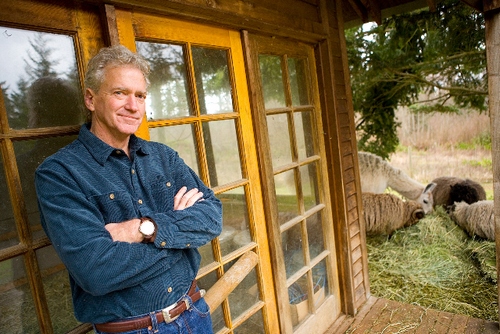
Kent Lovelace
First of all, thank you for accepting our interview invitation, Kent. As a form of ice breaking I would like to ask you to introduce yourself to ourselves in a non-traditional way: it could be a song, a phrase, a colour… anything you like, really.
At some point we’ve got to stop asking ourselves what is the meaning of everything, maybe it’s not so very important what it means. It’s probably more important what the sense of it is.. they are two very basic and different things.
Tony Cragg
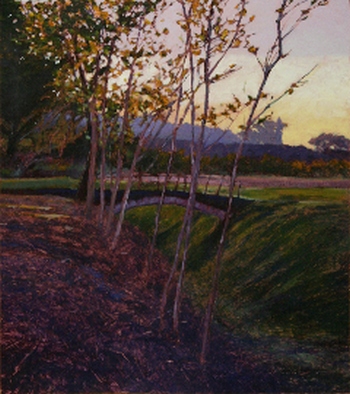
Foiano
What were your first artistic experiences? When and how did the idea to create art professionally arise?
I remember painting with worms. Take a pie pan, add blues and greens and lots of worms. Think Rothko for 5 year olds. Other than that, making ‘art’ was just a part of life, but it only occasionally involved pencils and brush. I made everything as a kid. I sewed, carved, wove, sculpted.
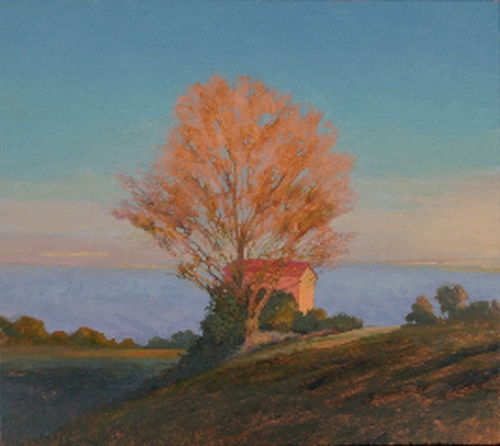
Vicino al Vorera
While a teenager, my father directed me towards the thought of making a living and what it would require. Art wasn’t a consideration. (And unfortunately neither was skiing) In my second year of college I stumbled across the energy then involved with printmaking. It mixed high craft with art and if I dedicated myself to it I thought I could make a living at it. My studies fell into place after that.
Following a BFA was an apprenticeship in Chicago with several great artists, (Oldenburg, Christo and others) and then graduate school. A week after graduation I opened a gallery/print workshop in Seattle.
My thought at the time was to follow that path till my mid 40’s and then rededicate myself to my own art making. I had continued making my own artwork so I just altered the amount of printing to zero and dramatically increased my art making. Fortunately it worked.
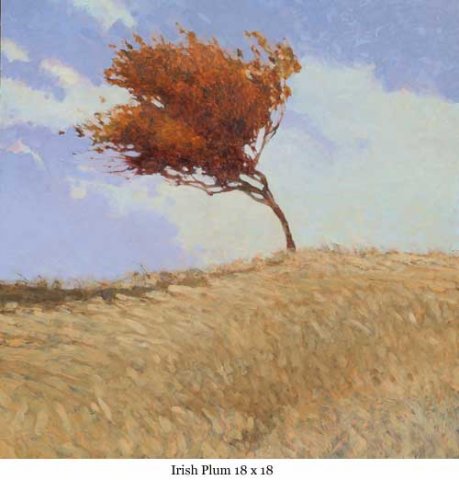
Irish Plum
Who are the artists – both contemporary and not – who influence you the most?
Claes Oldenburg showed me that you didn’t need to be odd to be an artist. Just be passionate. After him I worked with so many artists in collaboration it’s difficult to explain the influences.
Otherwise I look at a few artists from the mid 1800’s: Millet, Sabastion lePage, Callabote, even the textures and palette of Bouguereau. Today I look at Russell Chatham, Marc Bonne and Robert Marchessault in Canada. Occasionally I ponder a few of the contemporary figurative realists: Odd Nerdrum of course.
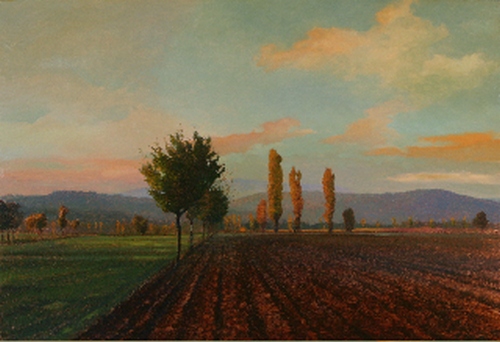
Anghierri
Being an artist is a challenge and a big risk. What was the way to your success?
Would it be too strange to say I get up really early five or six days a week and paint all day? And then I write emails and call clients and dealers when the brush is down. I also can credit having children with needing to take this pretty seriously.
I began an early career so as not to become distracted and weighed down by other pursuits. And fortunately I have quite a few dealers that like to schedule shows with me, so I always have deadlines.
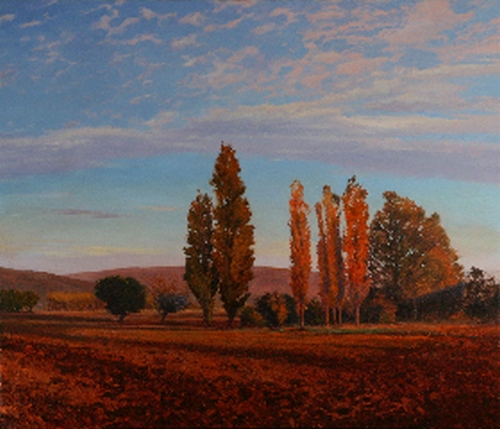
Chiana
As far as I know, apart from your works of art, you also teach, collaborate with galleries and print publishers… Tell us some more about all these.
I usually schedule from four to six one person shows annually. Between those efforts I have galleries that ask for works outside of scheduled shows. As I rarely say ‘No,’ something is always going out to a gallery.
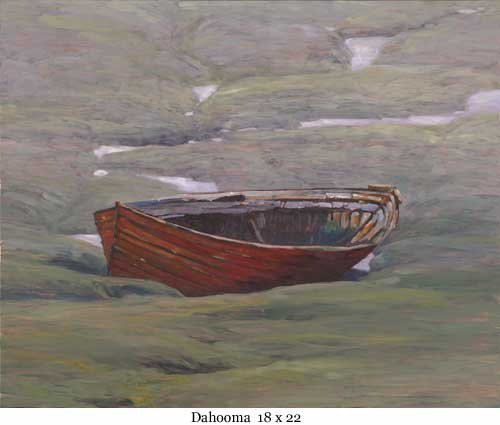
Dahooma
Print publishing was a major part of my life for years with collaborations with Chihuly, Jacob Lawrence and Robert Bateman. Now I work with a Canadian print publisher that concentrates on my own paintings. It’s not much.
I teach a workshop once or twice a year at the most. Though they are fun, I’d rather paint. When I do teach it is usually at the Gage Academy in Seattle. It’s a beautiful school with a talented and dedicated staff.
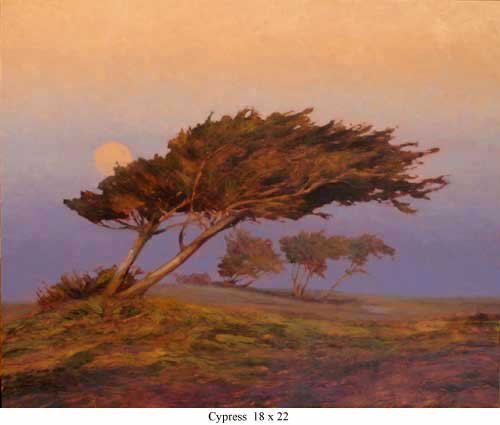
Cypress
You have your own studio called The Black Sheep. What is the story of the studio and its name?
I took about a half a year off when I moved to the island to build my studio. It’s a beauty. I enjoy building and it was good to take a break from the easel.
The studio is nestled on 10 acres with a view to mountains and the Puget Sound. Across a field are my sheep, llama, ducks and chickens. The Studio was named Black Sheep because as a child I was the ‘good boy.’
I enjoy a little irony. And… I suppose that the first three lambs born here were black, so what the heck? (Zack, Zippy, and, Moe)
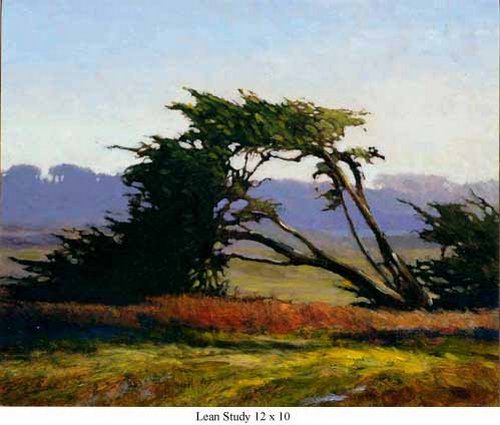
Lean Study
What are the methods and materials you usually use in the process of creating your pieces?
I work on sheets of copper. My artistic roots are in printmaking and I have a feel for copper and stone. I started using copper as a ‘canvas’ after a few years of working in oil and not liking gessoed surfaces.
It just seemed right and still does. It’s a process used by Rembrandt and many others working in oils centuries ago. As to method, it’s pretty simple. I sand the copper, paint a monochromatic ‘sketch’ in oil and let it dry. After that I glaze in translucent oils using Alkyds for a medium.
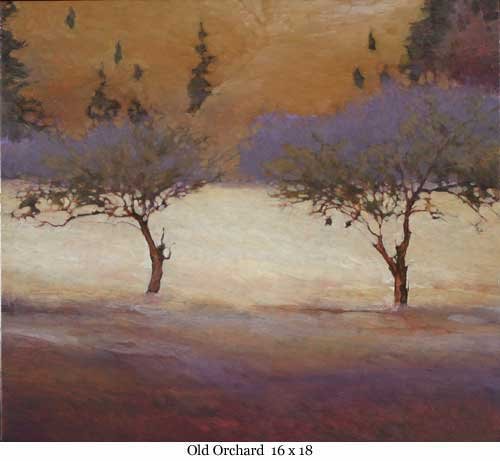
Old Orchard
I know it is difficult to translate colours, shapes, and light into words, but I would like to ask you how would you describe the dominant topics in your art compositions?
The words that come to mind today are narrative, geometry, atmosphere, humour. I paint with a few interests in mind. Sometimes I have a story to tell, other times a question to ask. I may paint refuge. Maybe a small pun.
And, I paint many things in order to understand them better. It’s not until nearly finished with a work that I really see it. Sometimes I just paint space.
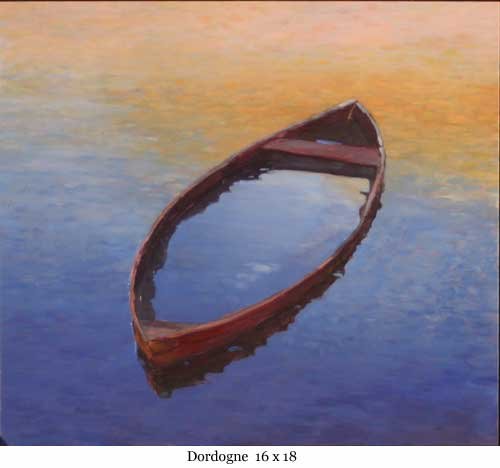
Dordogne
In one of your e-mails to me you said you usually seek for the unspectacular personal space that might be seen, but not necessarily remembered. Clearly, everyone interprets art differently, but still, what effect do you strive for?
Like nearly everyone, I love a grand view, big snow covered mountains, a great sunrise…. but I prefer that my art not be overwhelmed by the spectacular. It’s too damn big!
Instead, I look for quiet places; simple landscapes that allow me to explore composition and colour. I prefer to paint where and how we live. We travel without seeing what we pass. We experience our environment but maybe we don’t see it. I try to find it in my painting.
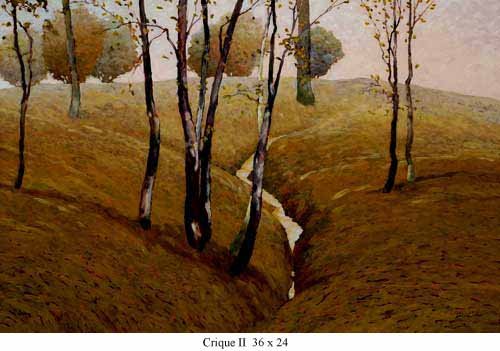
Crique
In your compositions there are no people depicted, however, they are emotionally present. What is the role of a man in your works?
I like the caves of Lascoux. It’s near where I often paint. People were there 40,000 years ago drawing and scratching on the walls. No people depicted there either. But human presence IS there. That same presence is what I seek to explore. Call it the original temple.
Where do you seek for inspiration?
Inspiration comes about by simply being in a landscape wandering around with my eyes and mind open. Sometimes I’m just lucky. Other times I follow an idea.
I know that your creative work includes some travelling. Is there a particular place which you associate yourself with or is just extremely special for you?
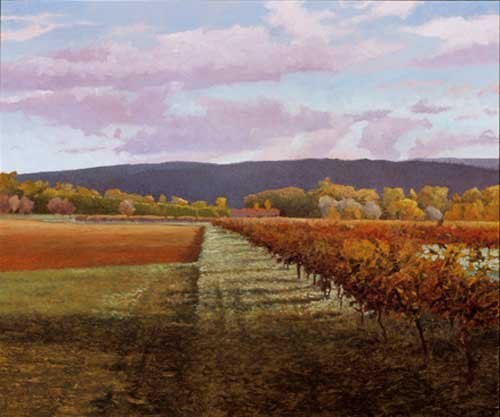
Vaucluse
I like to travel. The food and wine are good in Europe… there’s inspiration! Really, I do like Europe for several other reasons. Unlike the Western U.S. there is not a lot of large scale industrial farming.
My favorite places are in the Dordogne, the Vaucluse, the west coast of Ireland, Umbria and the valley’s of Tuscany. Finally, there is a hillside meadow adjacent to a pasture near Turenne in the Dordogne that really is wonderful. I’ve been painting it for years.
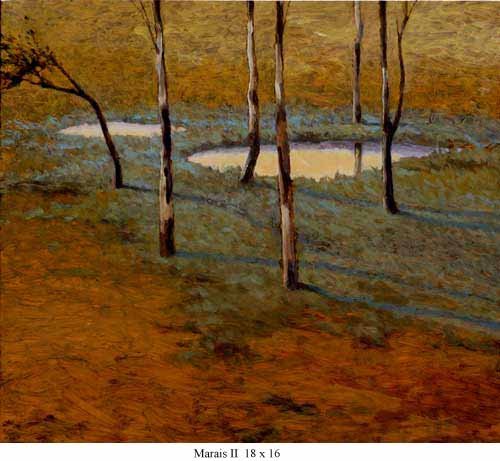
Marais II
Tell us about your recent, present, and near future projects.
Last year I concentrated on little compositions that explored a palette somewhat unusual for me. I felt a need to use a heightened range of hues, more cadmiums, other hotter colours.
This year I’ve moved to a less hot but still warm palette. I’m really trying to find the perfect super pale blue orange ochre violet sky. For that, I’m looking at Italy. It will probably take me a year to get close. Next year? I don’t know just yet. No doubt there will be some colour I will need to understand better.
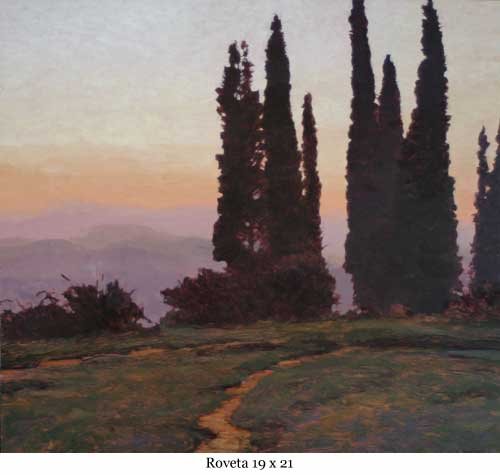
Roveta
We started the interview with a question which was not particularly typical and I suggest we finish it in the same style. If only for a day, the world surrounding you was painted in only three colours, which ones would you choose?
Easy!Italian earth, violet blue grey, and, green umber.
Thank you again for being our Artist of the Week. It’s been a pleasure.
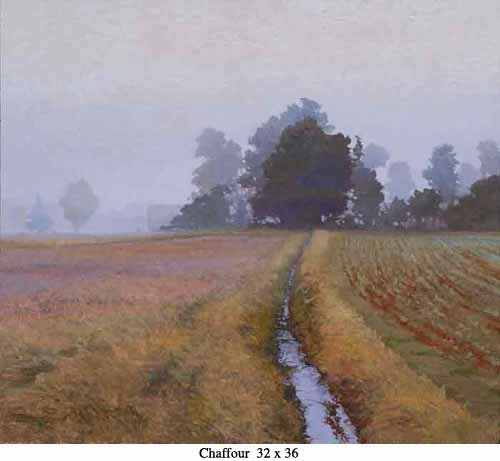
Chaffour
Kent Lovelace was born in 1953 and raised in the eastern hills of the San Francisco bay area.
He moved to the Pacific Northwest in the 1970’s and now resides on Whidbey Island, north of Seattle.
In 2005, Kent built Black Sheep Studio on Whidbey Island where he now paints and creates full-time.
He was educated as an artist in Colorado, Chicago and Seattle. While developing his career as a
professional artist, Kent also founded and developed Stone Press Editions; a fine art original print work-shop and publishing company.
He is a master lithographer in the classic sense, combining Old World printmaking craftsmanship and contemporary techniques with aesthetic sensitivity.For more than twenty years Kent was the principal lithographer for artists Robert Bateman, Jacob Lawrence, Dale Chihuly and numerous others.
Kent is a vital member of the Northwest art community. He was the president of the Seattle Gallery Association and is currently an active teacher and visiting speaker.
Kent’s paintings and prints have been exhibited in universities and fine art galleries in North America, Japan and Europe. His work is featured in private, public and corporate collections throughout the world.http://www.kentlovelace.com/
http://www.thechurchillgallery.com/lovelace/lovelace_bio.html
http://www.lisaharrisgallery.com/artists/lovelace.php











1 comment so far ↓
Nobody has commented yet. Be the first!
Comment